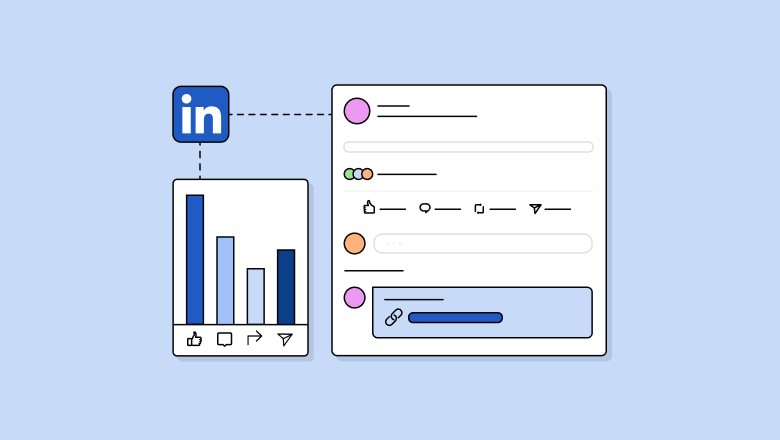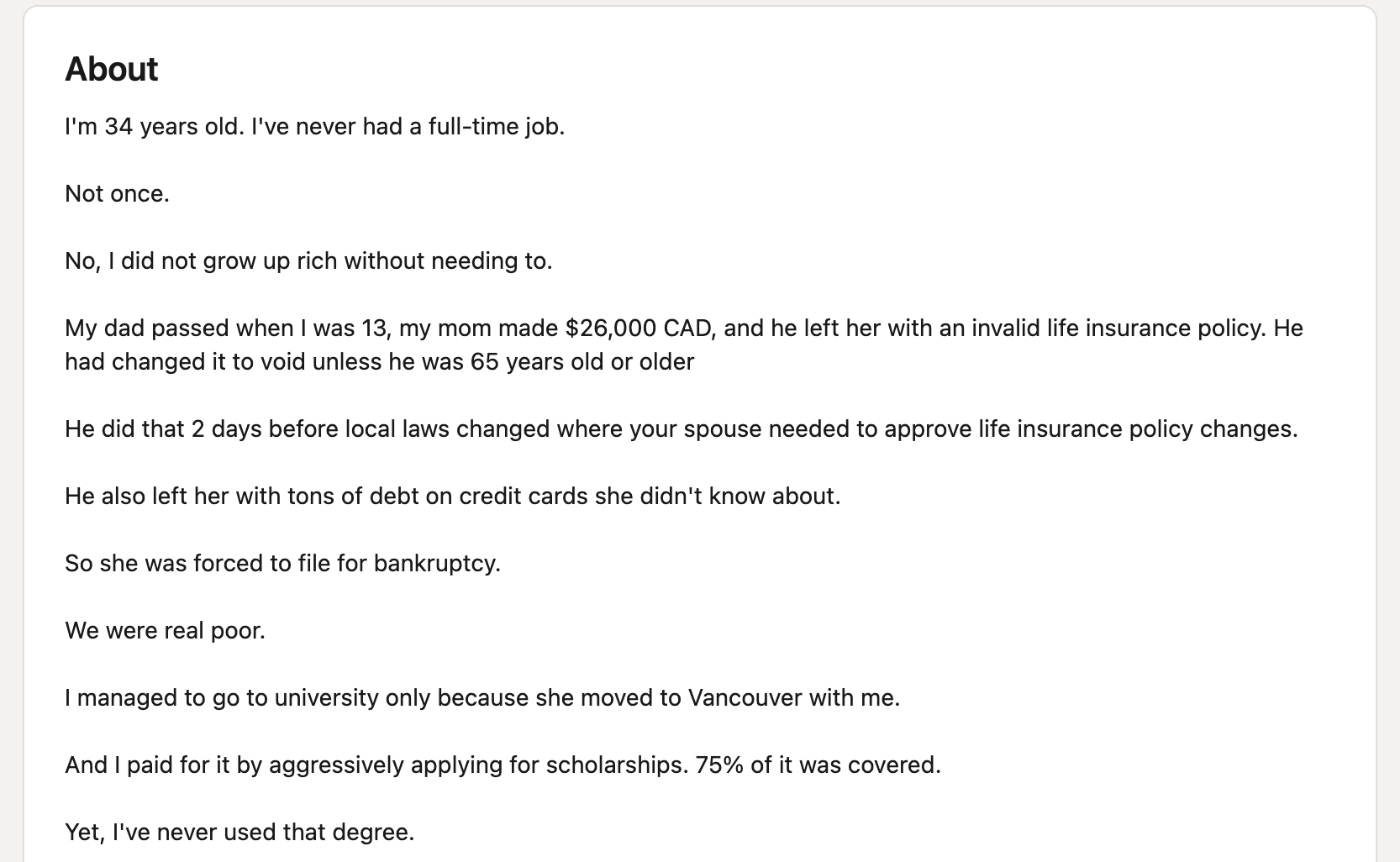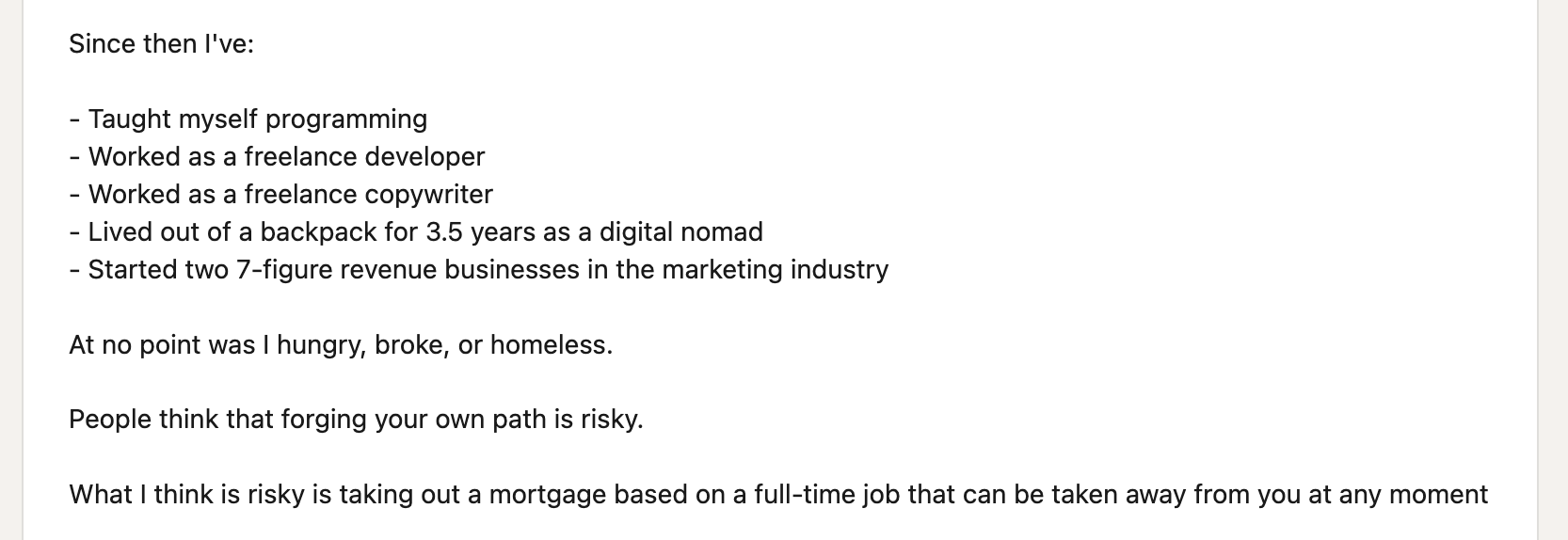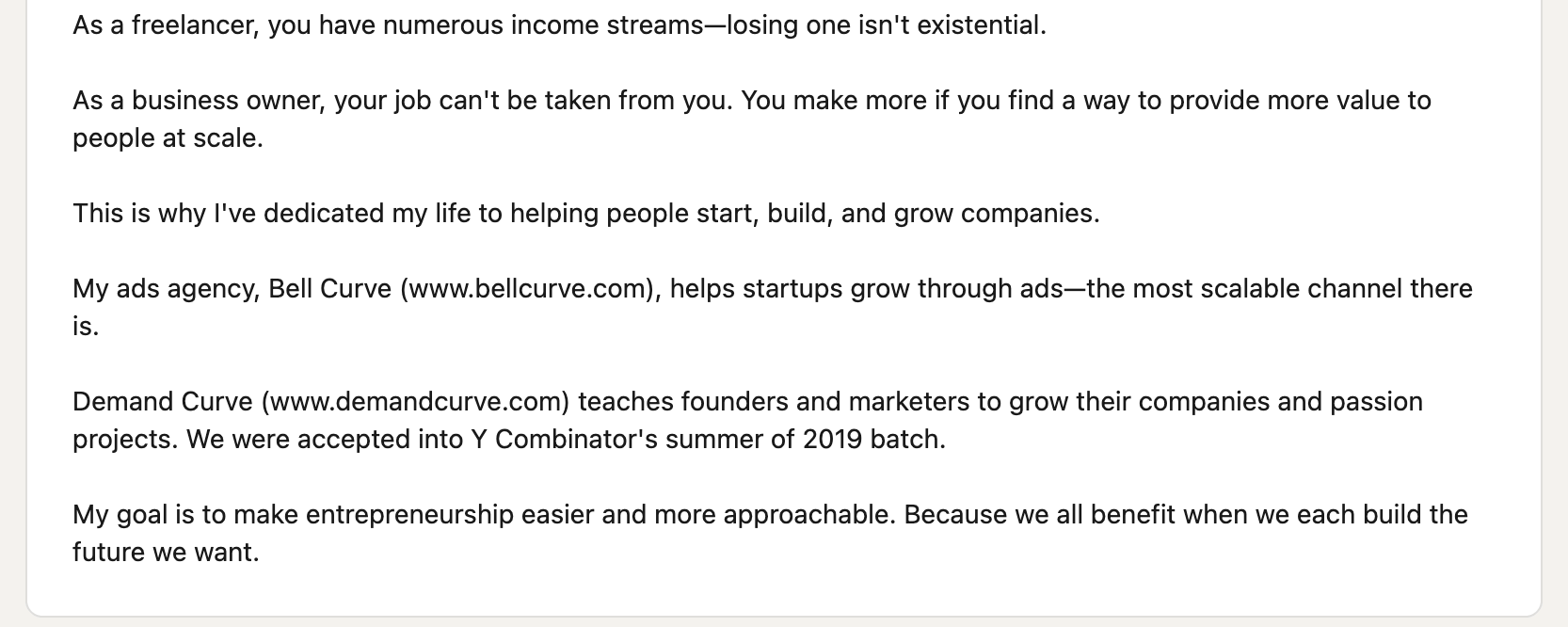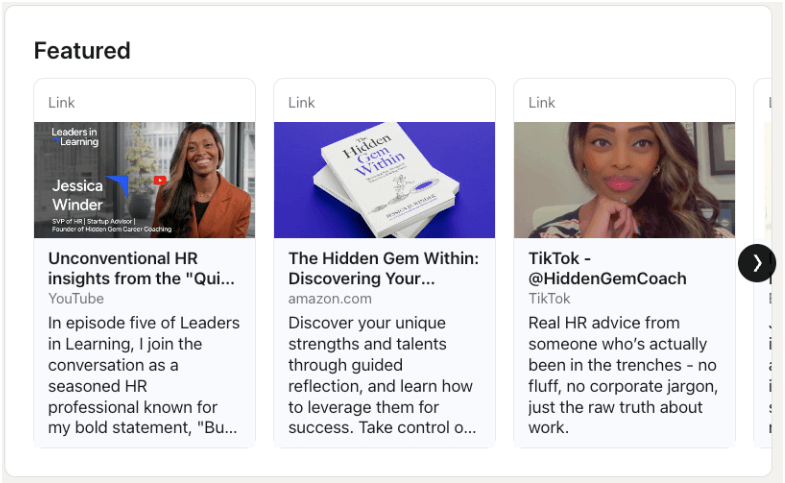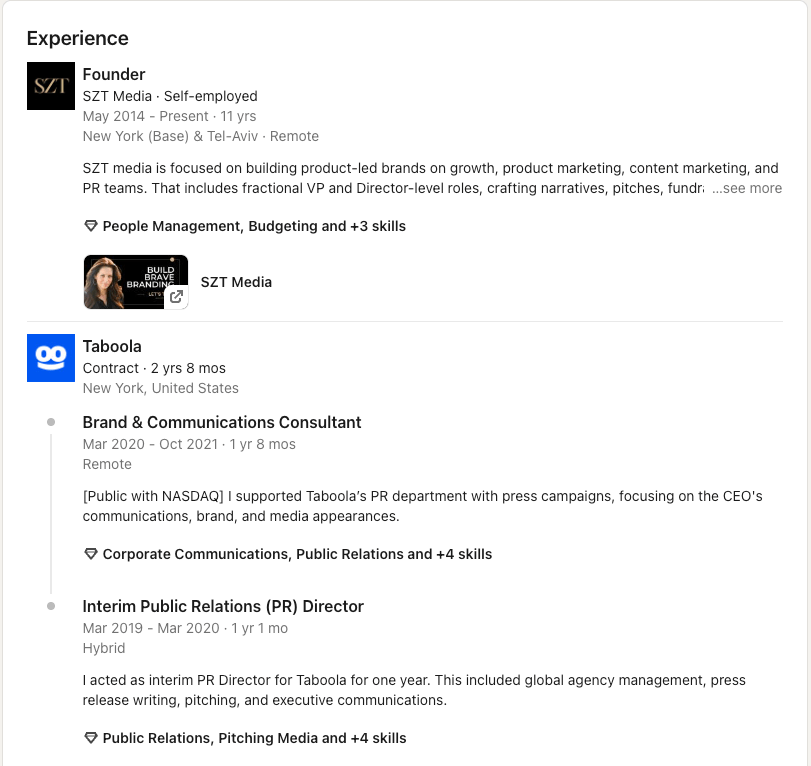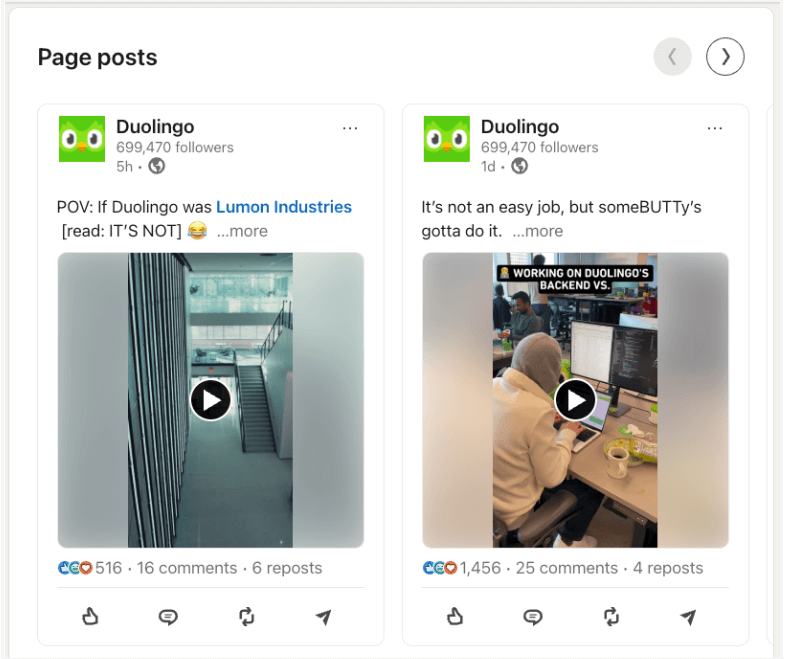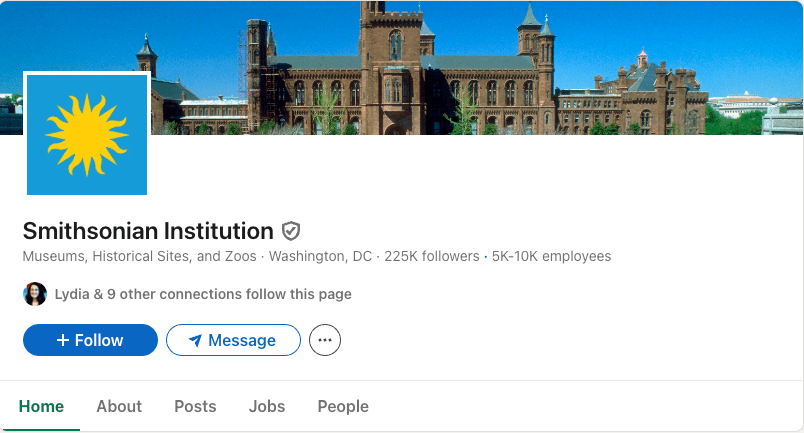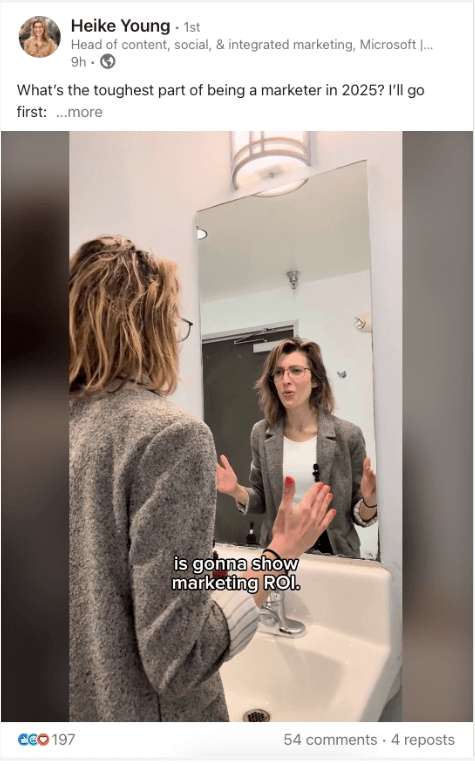If you’re a marketing professional, you know LinkedIn is a powerful tool for building relationships and brand awareness and selling your products and services. But it isn’t enough to create a profile and start posting, even if you have a solid LinkedIn marketing strategy.
LinkedIn has over 1 billion members globally, spanning 200+ countries and territories, and lists over 69 million companies. LinkedIn has cemented its position as the world’s leading professional networking platform. For B2B marketers, it’s an indispensable channel—89% use LinkedIn to generate leads, and 62% say it generates leads for their business.
Mastering LinkedIn in 2025 requires more than the basics. Marketers who use LinkedIn’s personal profiles, business pages and ads skillfully will gain a significant competitive advantage.
Optimize your LinkedIn profile for maximum visibility
An outdated profile always does more harm than good. Effective LinkedIn profile best practices include regularly updating your profile and leveraging all of LinkedIn’s relevant features, including:
Maximize profile photos and cover images
Your LinkedIn profile should include a profile image and a cover image that follow these best practices:
- Your profile image should be a headshot of you looking straight at the camera.
- Your profile image should show emotion—so smile!
- Your profile image should face right to subconsciously nudge viewers to read your profile.
- Your cover image should tell viewers what you do and who you do it for.
- Your cover image should align with your personal or company brand.
Katelyn Bourgoin is a master of buyer psychology. Her profile is an excellent example of using your headshot and cover image to attract the right audience:
Nail the headline
Your profile’s headline is the line of text under your name. You get 220 characters to tell the world who you are. It’s crucial to nail your headline because it’s prominently displayed on your LinkedIn profile and builds your credibility.
Like your cover image, it must clearly communicate what you do and who you do it for. Don’t make the mistake of writing a laundry list of facts.
- DO write something like: “Social media manager for early-stage startups in healthcare.”
- DON’T write something like: “Social media maven, entrepreneur, dog mom and life coach.”
There’s nothing wrong with multiple titles, but the second example makes your audience work too hard.
Justin Welsh is a well-known LinkedIn influencer who has mastered this concept:
Update your summary
Treat your summary as a sales pitch. You’re either selling your skills to potential employers or your business to potential customers.
- Tell a story about your experience or background to help connect with your audience.
- Provide proof of your skills (think brands you’ve worked with or impressive campaign results).
- Tell profile visitors what you want them to do next.
Neal O’Grady is the co-founder of Demand Curve. His summary does all three things. First, he tells his story:
Then, he provides proof that he’s the right person to help startups grow:
He ends by detailing his services and how they solve his target audience’s pain points:
Use featured posts to take profile visitors off LinkedIn
LinkedIn’s Featured section doesn’t feature your actual LinkedIn posts. Instead, it allows you to direct people off the platform.
Use this feature as a call to action (CTA). You might guide profile visitors to a landing page or your website if you’re a business owner. If you’re building your personal brand, you might guide profile visitors to your resumé, portfolio or other platforms.
Jessica D. Winder is the Senior VP of People Ops for Co-Lab Software. She uses her featured posts to link to YouTube videos featuring her, her other social media platforms and press coverage quoting her. These off-platform destinations demonstrate her expertise to her audience.
Add skills, experience and certifications
Increase your discoverability and boost profile visits by comprehensively filling out your LinkedIn profile’s Skills, Experience and Certifications sections.
Start by thoroughly completing the Experience section. Only list companies with LinkedIn company profiles whenever possible—empty gray circles where company logos should be may make your profile look less professional. Write concise, results-focused descriptions that are easy for visitors to scan.
Daniela Sztulwark is a marketing executive. Her Experience section includes succinct but powerful descriptions of her roles and projects:
Think of your Skills section as a list of searchable keywords. Before adding any skill, ask yourself, “If someone searches for this expertise, would I want my profile to appear?”
Your Certifications section should include all relevant credentials—but don’t overwhelm readers with lengthy descriptions. A concise list of your certifications shows your commitment to ongoing learning and validates your expertise.
Best practices to build a Company Page people will engage with
The best practices for a LinkedIn Business Page and LinkedIn profile are similar. Use your logo, cover image and company description to communicate what you do and who you serve and thoroughly complete all profile sections.
Beyond the basics, a genuinely engaging Company Page requires consistent, authentic activity with your audience, executives and employees. Your page should be a valuable resource for followers where you post regularly—beyond promotional content.
Post frequently
Post once a day and aim for a new post every weekday. The best times for business pages to post on LinkedIn are Tuesdays and Thursdays at 10 a.m.
Duolingo, a popular language learning app that posts on LinkedIn every day, often uses humor to engage its audience:
If you’re unsure what to post, compare the pain points your target market experiences to this list of social media post ideas to help you generate content.
Add a call to action
LinkedIn Pages offer the option to include a CTA, such as “Visit website” or “Sign up” for a newsletter, event or webinar. A CTA can transform your LinkedIn Page into a lead generation tool that motivates viewers to take action.
LinkedIn also offers a Follow button so visitors can stay up-to-date with your business’ activity.
6 LinkedIn content best practices for 2025
Implementing a LinkedIn content marketing strategy targeting the right demographics means creating high-quality, relevant content that drives engagement. LinkedIn post best practices amplify a thought leader’s core brand or message. You can apply these strategies to your own brand or message:
1. Comment for authenticity and reach
Before creating relevant content, thoughtfully comment on other posts. LinkedIn’s algorithm heavily favors content that generates conversations. Research shows posts containing replies can achieve a 2.4x greater reach than standard posts.
Engaging meaningfully with your network’s content first will expand your visibility. When you publish content, these connections will naturally lead to a higher comment rate on your posts.
When you post, join the conversation in the comments to broaden your reach. LinkedIn prominently tags your comments as Author:
Avoid relying on AI to mass-produce generic comments. The LinkedIn community has grown increasingly frustrated with this practice because it undermines authentic connections. Quality—not quantity—engagement will build a community that genuinely interacts with your LinkedIn content marketing efforts.
2. Prioritize new formats
LinkedIn tends to favor its newest features in the algorithm. Creators who jump on them early see better reach.
Dave Gerhardt famously spotted this pattern at Drift when LinkedIn first launched video. Believing the algorithm would prioritize the new format, he organized a “LinkedIn takeover” where 120 employees posted iPhone videos about the company’s latest email marketing product. Their content flooded everyone’s feeds, created healthy competition among team members and generated a lot of attention for the product’s launch.
Short-form video
The same pattern applies today. Short-form video became LinkedIn’s newest feature after beta testing started in March 2024. These vertical videos are under 60 seconds long and optimized for mobile.
One content creator, Gabrielle Judge, uses this format to share career advice with job seekers:
It’s now the platform’s fastest-growing content category, with video viewership increasing 36% year-over-year.
Newsletters
Newsletters are another recent LinkedIn innovation. As of January 2024, all members can create newsletters, allowing creators to send content directly to subscribers’ inboxes.
Orbit Media publishes a newsletter that features thought leader voices.
If you subscribe, you’ll receive article content in your feed and email inbox. On the platform, it looks just like a LinkedIn article with an additional Subscribe button at the top.
3. Post carousels (aka Documents)
Native Document posts previously dominated LinkedIn, and many creators still use it to share carousel-like content organically.
But since the introduction of newer features in 2023, profiles that post Documents have experienced a 20.3% decline in reach. Document posts have the highest average engagement by impression rate at 14.2% for accounts with up to 5,000 followers. They’re potentially worthwhile for creators who are still building their audience.
This level of engagement makes sense when you consider that LinkedIn users are looking for helpful, in-depth information. By uploading a PDF, for instance, directly to LinkedIn, you’re providing your audience with the valuable content they crave.
Leverage native Documents to:
- Share an in-depth case study.
- Provide a helpful how-to guide.
- Offer an exclusive white paper or report.
4. Obsess over the hook
LinkedIn truncates post text with all content formats. On mobile devices, only 200 characters are displayed—on desktops, it’s 300. These initial words determine whether anyone clicks to read more or engages with your content.
Get attention with content that stops the scroll—it outweighs selecting the right hashtag. The best hooks use these approaches:
- Start with a surprising statistic or bold claim: “Only 3% of LinkedIn posts get significant engagement.”
- Ask a thought-provoking question: “What would happen if you approached networking from the opposite direction?”
- Share a mini-story setup: “My dream job rejected me three years ago. Today, I’m the CEO.”
- Create curiosity gaps: “The most valuable LinkedIn skill isn’t what most people think.”
- Use contrarian perspectives: “Everyone says you need to post daily. I totally disagree.”
- Lead with value: “I’m sharing my five-step client acquisition framework that generated $2M last quarter.”
Nicolas Cole nails this with content that promotes his ghostwriting academy. This hook combines immediate value with a curiosity gap that makes you want to click for more:
5. Use your face
People want to connect with people. When someone is scrolling through their LinkedIn feed, seeing a human face is an immediate psychological stop sign.
Over time, your audience will associate your face with the value you bring. This visual recognition builds trust, encouraging your audience to pause and engage. You can incorporate your face into static images that accompany your posts or, even better, appear in video content.
Heike Young, Head of Content at Microsoft, is a great example of this. She consistently appears in her own videos and produces lighthearted, entertaining skits that resonate with marketers.
6. Track your progress using LinkedIn analytics
The most successful LinkedIn users consistently analyze performance data to adjust and readjust their strategy. LinkedIn’s analytics tools tell you what resonates with your audience and what needs improvement.
Unlock insights by tracking key metrics like engagement rate, click-through rate and follower growth to measure your content’s effectiveness. Pay close attention to which topics generate meaningful conversations because LinkedIn’s algorithm boosts content that gets people talking.
Regularly reviewing these insights allows you to strengthen, streamline and optimize your content strategies.
4 best practices for LinkedIn ads
LinkedIn ads can help you reach new audiences and grow your business. But, as with any type of paid advertising, you must use ads strategically to resonate with your audience, including these tactics:
1. Target key decision-makers
LinkedIn ads let you target people by job title, company size or specific skills. When you’re developing your LinkedIn ads, don’t just target employees—include the people who decide what products or services to buy. For example, you can target specific job titles, like “VP of marketing” or “director of sales.”

2. Write relevant ad copy
Your LinkedIn ad copy should be relevant to the people you’re targeting. If you’re targeting small-business owners in the healthcare industry, your ad copy should reflect this. Speak to your audience’s pain points: “Are you interested in making your health tech employees more productive? We are experts based in Los Angeles. Get in touch now to discover how.”
The more relevant your ad copy is to the people you’re targeting, the more likely they’ll notice it—and take action.
3. Personalize your ads
Take the time to personalize your ads using the Dynamic Ads feature. It can be as simple as including a recipient’s first name in the headline or using an image that features one of their products.
4. Test, test and test again
LinkedIn is pricier than other platforms. Making the most of your ad spend by testing different audiences, producing creative copy and trying out different ad formats will help you avoid wasting money. To maximize your ROI, consider automating a series of short, timed tests for each variant before launching a full-fledged campaign.
When you find something that works well, commit to it for at least 30 days and commit to a minimum daily spend so you can gather consistent data.
Find marketing success on LinkedIn
An effective LinkedIn presence comes down to consistency and authenticity. To maximize your impact, embrace new features early, create valuable content and cultivate genuine connections. To guarantee that all that posting, engaging and content creation is worth the effort, you must keep track of your results.
Test different approaches and use Sprout Social’s LinkedIn analytics tools to monitor metrics, identify what resonates with your audience and refine your strategy based on actual results.
Download our LinkedIn strategy worksheet to optimize your content strategy and discover which LinkedIn best practices deliver the results you’re looking for.
The post LinkedIn best practices for marketing professionals appeared first on Sprout Social.
